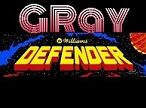LONG LOST Joust by Atarisoft Commodore 64 Review!!
On July 15th, 2020, gamesthatwerent.com revealed a long lost Atarisoft conversion of Joust for the Commodore 64 had been discovered and released for free to the public. This was an amazing find, a long time coming. It’s a shame that this game never saw the light of day. I think it would have sold well, especially considering how popular Joust was in the Arcades.
Reading about its discovery, there was a nice excerpt from gamesthatwerent.com:
After hitting a bit of a brick wall, in late May 2020 – preservationist Ken Van Mersbergen got in touch and stunned us all by confirming that he had fully preserved the game. Ken explains how this happened and how he came to find the game:
“I was going through the archive of a retired programmer who used to work for Roklan Corporation and On-Time software. I was reading and converting some 8-inch CP/M disks when I came across a couple of files named JOUST on a disk containing the source code for C64 Popeye.
At the time I thought nothing of it as I was just converting the files for his digital archive. Months later I came across your site and saw that C64 Joust was never released so I sent back to the archive to see what system the Joust files were for. To my delight it turned out to be C64 Joust!”
GAME DESCRIPTION:
Joust is a single screen Arcade game released by Williams electronics in 1982. The ROM for the Commodore 64 weighs in at 16kb. In it, you play by flying on top of an Ostridge around the screen loaded with a lance. Your objective is to eliminate all the enemies using your lance but in order to succeed you have to be positioned higher than your opponent. When jousting, If you are at the same height, you will merely bounce off your competitor. If you are lower you will lose a life. When you lose a life, your rider disappears and the Ostridge must make its way off the screen before resuming play. Starting again, you will be randomly placed on one of the landing pads and will have a few seconds of invincibility.
You start the game with four Ostridges. Destroying your opponent will produce an egg that drops to the ground. Well, many times you can capture the egg mid-air, so it may never make it to the ground. The eggs must be collected before they hatch a new rider causing you to have to redo your hard work a second time. Clearing all the enemies and their eggs on the screen will advance you to the next wave of enemies.
Joust can be played either solo or with two players cooperatively clearing levels. You have to be careful in a two-player game because you can kill each other if even by accident.
In the “Gladiator” waves, the first player to kill their opponent will be awarded 3,000 gladiator points. In other waves, you lose the chance to get bonus points should either of you die.
When either player loses all their lives, their game is over, allowing the other player to continue playing.
Title screen
The title screen in Joust proudly displays the game’s name with the rotating banner effect. Here you can choose the game’s difficulty and select the number of players to start with.
The default difficulty is “Skilled“. If no selections are made, an attract mode is initiated showing sample gameplay, and previous game scores, before looping back around to the title screen again.
Gameplay
In addition to Jousting, you are also able to land your Ostridge to collect eggs. You can also fly low, bouncing on the platforms to capture them. At the bottom of the screen are lava pits covered by a thin platform. After clearing a few rounds, this platform disappears allowing you to fall to your death into the lava. In later levels, the evil lava can reach up and grab you, so it is dangerous hovering over it too long. In addition to the lava platforms, as you progress the levels, other platforms will disappear as well, forcing you to fly longer and be accurate to win your joust matches. If you take too long to clear a level, a pesky pterodactyl may make an appearance incentivizing you to complete the level quicker. The pterodactyl is aggressive and difficult to kill.
Controls
You can play joust with a standard joystick. Pressing the fire button makes your Ostridge flap it’s wings. Moving left or right will move the Ostridge in that direction. Having played the arcade version of Joust, I was used to having to press the flying button much more frequently than in this Commodore port. However, I think they relaxed it a little bit to cut back on the required button mashing. This means you have to be a lot more careful how many times you press the button and you have to time it perfectly to win your jousting matches. Pressing F3 on the keyboard will select your difficulty setting. Pressing F5 will select between single or two-player modes. Pressing F1 will start the game.
Scoring
There are three types of enemy knights, the red ones are worth 500 points. Gray ones, 750, the blues ones are worth 1,000 points each. You are awarded 50 points when losing a jousting match, 250 for winning a jousting match.
Pterodactyls are worth 1,000 points. Eggs typically start out worth 250 points and range up to 1,000 points in 250 point increments. You are also awarded a 3,000 point bonus for not dying on a survival wave and as I mentioned, on the Gladiator waves, 3,000 points for defeating player two, the first time.
Spare life
You are awarded a spare life every 20,000 points.
Strategy
My strategy is fairly simple in the “Skilled” or default difficulty most of the enemies, for the most part, hover around their same level, and occasionally they will drift up or down, slowly over time. So what I try to do is fly up to the top, waiting above the platforms, and carefully drop down on them one at a time. However, you have to act fast because if you take too long the pterodactyl will make an appearance.
Graphics
The graphics in Joust are more or less what I would have expected. After a while, you forget the platforms are yellow instead of brown. There could have been a few improvements in the area of the title screen to make it look more graphical like the Arcade. The Ostridges are animated and nicely detailed. However rather than use separate colors for the riders, in this version they just colored the entire sprite one color. I’m thinking this may have been done because of the rider resolution, but I am not sure. The eggs look decent. The pterodactyl animation could have used a little work. Also, the lava lacks any good animation. In the arcade version, after a while, you would see an animated fire burning above the lava which would burn away the platform above, and you might occasionally see bubble up animations, effects which are missing here.
Sound
To be honest, the sound effects were the most disappointing part of this port for me. I was hoping for much more arcade accuracy. Having said that, all the sound effects appear to be in play. There are sounds for flying, dying, tying a joust, winning a joust, walking, bouncing, picking up eggs, bonus lives, and the pterodactyl sound is present.
Difficulty switches / Level ramp-ups
We are so lucky this port was so feature complete. The difficulty selection is an example of that. There are four to choose from:
In the “novice” setting the game starts you out with one buzzard. When you win a joust the egg produced will never hatch. The pterodactyl never makes an appearance.
In the “Skilled” setting you start out with three buzzards, the eggs hatch, and the pterodactyl will appear if you take too long to clear a level and starting around the “pterry” wave.
In the “Advanced” and “Expert” settings you start out with five and six buzzards respectively and they seem to move quicker and the eggs hatch faster.
The difficulty settings are balanced and the level ramp-ups are nicely spaced.
Easter eggs
I am not aware of any Easter eggs for this game. That doesn’t mean there are not any so if you do learn of any please share them with me in the comments.
Suggestions for Improvements
This is a surprisingly well-polished release. As I said I would have liked to see a more graphical title screen. On the arcade version, you will notice the lava fill up to the bottom platform slowly over time, whereas here it starts out already at the top. The eggs don’t drop to the ground nearly as often as they do in the Arcade version for some reason. I found this to be weird. The sound effects although adequate, I believe could have been much better had they more closely mirrored the arcade version. Although there is less flapping required to fly, I feel like it should be a little less aggressive. If you press the button three times you will bounce off the ceiling for example. You also seem to bounce too high off of a buzzard when struck from beneath. When the eggs hatch, in this version, the rider is already with ostridge rather than waiting for it to fly in, to pick up the rider.
I’ve only noticed a few glitches that don’t happen too often. If you are flying in the border areas of the screen, far-right or left, I have been able to appear above a platform I was underneath on the other side. Not sure if that’s intended or not. I have noticed some intermittent flashy glitching while playing mostly on the top right-hand side of the screen. I’ve noticed the player’s sprite disappears and quickly reappears from time to time.
Ports
Joust is the last in a long line of ports to many different consoles including the Atari 2600, Atari 5200, Atari 8-bit family, Apple II, Macintosh, MS-DOS, and the Nintendo Entertainment System.
Media Coverage
When this port was discovered, it didn’t get a whole lot of media coverage but several smaller outlets did cover the story such as gamesthatwerent.com and Indieretronews.com
Conclusion
Joust was a game that broke new ground on a few different areas of video gaming. The games concept was unique and it was one of the earliest video games that supported two-player co-operative mode. Quite simply there were no other games like it. Being able to fly around on Ostridge’s and joust your opponent made for a surpassingly fun game. I dropped many quarters in the arcade playing Joust. The Commodore 64 version delivers a great port and I had a lot of fun playing it.
Strongly Recommended
Youtube Description:
This is my review of Joust for the Commodore 64. It was originally developed by Atarisoft, but never saw the light of day, that is, until now!!
Single-player gameplay:
https://youtu.be/CivNqhT1kRw
Two-player cooperative gameplay:
https://youtu.be/GuPgykGUx-g
Links:
https://www.gamesthatwerent.com/gtw64/joust/
http://www.indieretronews.com/search/label/Joust
Youtube Original Post Date: 07/27/2020



